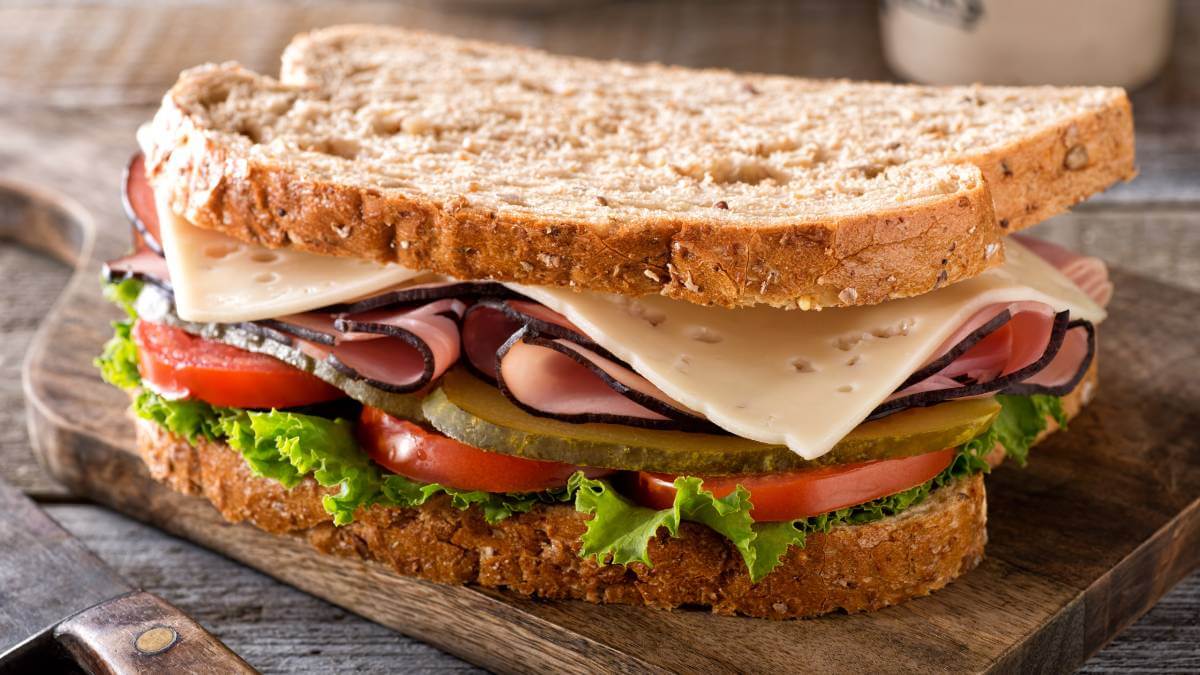It’s a staple of most people’s diets in some form or other, but where did the sandwich come from?
The popular story has it ‘invented’ by the Fourth Earl of Sandwich in the 18th century, to which I say, what utter rubbish. It was named after him, but the idea that no-one thought of putting food between two bits of bread before then is ridiculous.
This fanciful tale goes that the Earl, well known for his less-than-salubrious habits – no-one can quite work out how many illegitimate children he had – was ever-reluctant to leave gaming tables. So he called on a passing servant to bring him a slice of meat between two bits of bread to keep him sustained as he lost colossal amounts of money. Being in company, others began to order ‘the same as Sandwich’ and the name stuck.
Great story, but it can’t be verified – apart from the bit that it was named after him. A more likely scenario is that he required sustenance during his hectic work schedule – he was first lord of the Admiralty three times among other jobs – although that bit about his illegitimate children is true and he did like to gamble.
Bread to last
A contemporary travel book named him as the inventor, and as the aristocracy was the celebrity culture of the day, it was taken by up everyday people with enthusiasm.
The sandwich had a boost with the rise of the industrial society, which had a workforce that needed quick, easy portable meals.
In truth, the sandwich in some form or other has been around for centuries. From early Passover meals to Indian cultures wrapping food in flatbreads, the sandwich transverses time and culture. In European countries in the Middle Ages, stale bread was often used as a primitive plate called a trencher and the Dutch had belegde broodje, a type of open-faced sandwich that has morphed into a more traditional roll in modern times.
Considering that popularity, what exactly makes a sandwich? Can it be open? Can a bun be involved? What sort of fillings are in a sandwich? Americans have a much looser definition of a sandwich and for them it can cover things such as a hot dog in a bun or what we would call a burger.
Well, would you believe there have been official decisions on it? Of course there have.
Official rulings
Bureaucrats with far too much time on their hands have made rulings on it.
The US Department of Agriculture has declared that to be called a sandwich, it must include “at least 35 per cent cooked meat and no more than 50 per cent bread” for closed sandwiches, and “at least 50 per cent cooked meat’ for open sandwiches”.
Is there a sandwich police checking the percentage of bread? It seems like something the Americans would go for.
Across the pond, the British Sandwich Association has declared it “any form of bread with a filling, generally assembled cold”. A definition that includes wraps and bagels, but excludes hot dishes such as burgers.
I like to think of the British Sandwich Association as just a bunch of English people in ill-fitting trench coats tucking into a ham and pickle sandwich in a cosy pub, but it is an official industry group.
And just in case you felt you needed legal recognition of the sandwich, in 2006, a US court ruled that a sandwich included at least two slices of bread. The issue came up when a Mexican food operator offering tacos, burritos and quesadillas tried to move into a shopping centre and an existing sandwich business wanted them gone under a ‘no compete’ clause. They lost.
A sandwich by any other name
Other names for sandwich that don’t have quite the same universal appeal are:
- ‘butties’ named after a piece of bread with butter, but now covering such delicious offerings as a chip butty and a bacon butty
- Australian sanga, because we love to shorten everything
- British sarnie, because they also enjoy shortening things
- and the less well known Scottish ‘piece’, which, like a lot of Scottish slang, who knows why?
What’s your favourite sandwich filling? Why not share it in the comments section below?
Also read: Steak Sandwich with Fried Onions and Mustard

